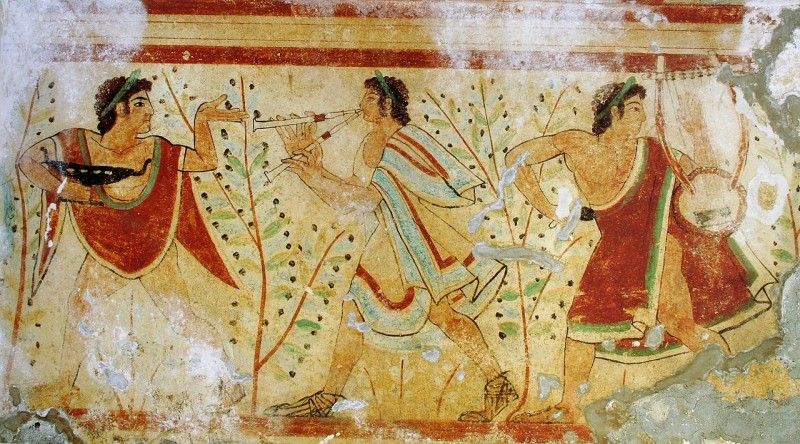The science of art: Nate Craig combines his interests in art history and STEM

Scratch the surface of the world and you find math. Equations lurk even in art, from the geometry that structures architecture to the processes and materials from which artwork takes its form.
In that light, Nathanial Craig’s dual major in art history and mathematical sciences makes sense.
Some art historians look to data and mathematics to back up their claims, he explained. Others use philosophical terms derived from mathematical sciences.
“There is more crossover than you would think,” said Craig, who is currently reading Diane Greenwald’s Painting by Numbers: Data-Driven Histories of Nineteenth Century Art. “Exploring where art meets some of the hard sciences and math is definitely of interest to me.”
In April, Craig presented a paper, “Etruscan Pigments: A Chronological Examination,” at the 2021 SUNY New Paltz Undergraduate Art History Symposium. It was his second time presenting at the conference, which took place online from April 9 to 11; he was the only Binghamton student to present this year.
“It was for sure very nerve-racking to present formally, but once I got into a flow of things my presentation went fairly well,” he said.
His research took root in the Etruscan archaeology course taught by Assistant Professor of Classical and Near Eastern Studies Hilary Becker, as well as last fall’s interdisciplinary Materials Matter class, co-taught by Hilary Becker, chemist Lynn Schmitt and Marvin Bolt, curator emeritus of science and technology at the Corning Museum of Glass.
The Etruscans lived in central Italy around the first millennium BCE. Craig mostly looked at their tomb paintings and sarcophagi.
“I was trying to understand how Etruscan pigments developed over time and how their knowledge of said pigments developed,” he said.
He relied on research reports that used a variety of techniques, such as X-ray fluorescence and Raman spectroscopy, to get down to the atomic level. If a pigment contains a good deal of iron, for example, the sample may be made of red ochre, he explained.
The material aspect of art has its own stories to tell about how a piece came into being, even after the names and identities of the artists have been lost to time — as is the case with the Etruscans.
“What Nate put together is all to his credit. He wrote a good paper that incorporated the scientific knowledge he had learned in another class to explore how these particular materials can tell us more about Etruscan art and status,” said Becker, who has also conducted research into Etruscan pigments. “I admire Nate’s interest in wanting to contribute to symposia.”
Craig’s interests aren’t limited to ancient art. For his senior thesis, he is researching modern artist Lynda Benglis, investigating the materials she used and how these materials interact with larger concepts such as gender.
Currently a junior, Craig plans to graduate in the fall of 2021. The Hyde Park native has come to love his University experience and the Binghamton area as a whole. He particularly enjoys all the extracurricular activities available — he’s on the club water polo team — and is looking forward to a more normal, post-COVID semester in the fall.
Professors who made a difference for him include Associate Professor Tom McDonough and Associate Professor Julia Walker in art history. Becker also played a significant role.
“She made learning during COVID fun, and has continued to support me in my research and helped prepare me for the SUNY New Paltz presentation,” he said.


